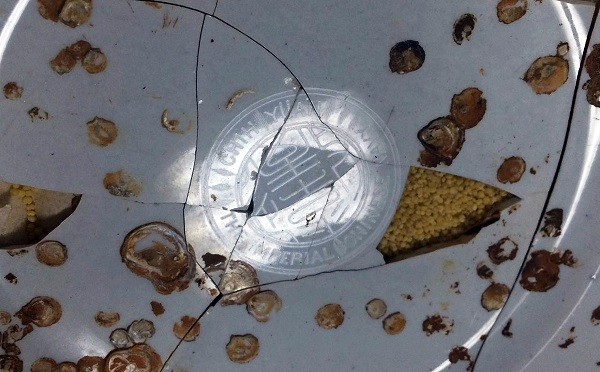Divers and archaeologists were able to save a large number of items from a sunken wreck of a warship called Zhiyuan, which was sunk by the Japanese navy approximately 121 years ago off the coast of Dandong, Northeast China.
According to Zhou Chunsui, the head of the State Administration of Cultural Herritage mission, over 100 items were recovered from the wreck.
A Qing Dynasty warship, the cruiser Zhiyuan served as part of the Beiyang Fleet during the 19th century. Prior to its identification, the shipwreck was nicknamed "Dandong No. 1."
It was only properly identified as Zhiyuan after the discovery of a shattered porcelain plain with the words "Zhiyuan" written on the back.
The Zhiyuan met its Japanese counterparts on Sept. 17, 1894 during the Battle of the Yalu River, the largest naval engagement of the First Sino-Japanese War. Captained by Deng Shichang, the Chinese cruiser was eventually hit by a Japanese shell during the battle.
Instead of abandoning the Zhiyuan, Captain Deng ordered a full-speed charge toward the Japanese Navy's flagship to protect the Beiyang Fleet's own flagship. Before it reached its target, however, the Zhiyuan exploded. Of the 252 officers and soldiers aboard, only seven survived. Captain Deng, along with most of his men and his dog, perished.
According to history expert Guan Jie from the Society of Sino-Japanese Relations History, the Beiyang Fleet used most of its forces during the battle against the Japanese Navy. The excavation of the Zhiyuan allows them to take a peek into this period of Sino-Japanese history.
Other history experts, however, do not want to make final conclusions about the ship and its history.
"The relics and information currently in hand indicates it's the wreck of the warship Zhiyuan, but more work needs to be done before publishing the final conclusions," said Song Jianzhong from the National Center of Underwater Cultural Heritage in an interview with the Global Times.
Plans to build a museum to commemorate the Battle of Yalu River are currently being negotiated by the State Administration of Cultural Heritage.



























